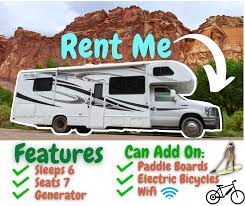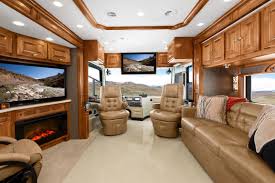The Essential Guide to RV Awning Arm Replacement Parts
RV awnings are a crucial feature that provides shade and protection from the elements during your outdoor adventures. Over time, awning arms may wear out or get damaged, requiring replacement parts to ensure the functionality and safety of your RV awning. Understanding the different types of RV awning arm replacement parts is essential for maintaining your awning system in top condition.
Types of RV Awning Arm Replacement Parts
**Awning Arms**: The main components that support and extend the awning fabric are the awning arms. These arms come in various lengths and styles to fit different types of RV awnings.
**Awning Arm Hardware**: This includes brackets, screws, bolts, and other fasteners that secure the awning arms to the RV body and allow for smooth operation of the awning.
**Awning Arm Springs**: Tension springs help retract and extend the awning smoothly. If your awning is not rolling up properly, a worn-out spring may be the culprit.
**Awning Arm End Caps**: These caps cover the ends of the awning arms, providing a finished look and protecting against water intrusion.
How to Replace RV Awning Arm Parts
**Identify the Issue**: Determine which specific part of the awning arm needs replacement by inspecting for damage or wear.
**Gather Replacement Parts**: Purchase the correct replacement parts from an RV supply store or online retailer, ensuring they match your existing awning system’s specifications.
**Prepare Tools**: Have basic tools such as screwdrivers, wrenches, and pliers ready for disassembling and reassembling the awning arm components.
**Replace Parts**: Follow manufacturer instructions or consult with a professional if needed to safely replace damaged or worn-out parts with new ones.
Maintaining Your RV Awning System
To prolong the lifespan of your RV awnings and avoid frequent replacements, regular maintenance is key:
- Clean your awnings regularly to prevent dirt buildup.
- Lubricate moving parts like hinges and springs to ensure smooth operation.
- Inspect for signs of wear or damage after each use and address any issues promptly.
By understanding the importance of RV awning arm replacement parts and proper maintenance techniques, you can enjoy hassle-free outdoor experiences with a reliable and functional RV awning system.
Essential FAQs on Replacing RV Awning Arm Parts
- 1. How do I know if my RV awning arm needs replacement?
- 2. What are the common signs of wear or damage in RV awning arms?
- 3. Where can I purchase RV awning arm replacement parts?
- 4. Are RV awning arm replacement parts easy to install for beginners?
- 5. Do I need special tools to replace RV awning arms?
- 6. Can I replace just one damaged awning arm, or should I replace both sides?
- 7. How often should RV awning arm replacement parts be inspected and replaced?
- 8. Are there different sizes of RV awning arms available for different types of RVs?
- 9. What is the average lifespan of RV awning arm replacement parts?
1. How do I know if my RV awning arm needs replacement?
When determining if your RV awning arm needs replacement, there are several key signs to look out for. Firstly, inspect the awning arm for any visible damage such as cracks, bends, or rust that may compromise its structural integrity. Difficulty in extending or retracting the awning smoothly could indicate worn-out components that need replacing. Additionally, if you notice excessive sagging or uneven tension in the awning fabric when extended, it may be a sign that the awning arm is no longer providing adequate support. Regularly checking for these indicators and addressing them promptly can help maintain the functionality and safety of your RV awning system.
2. What are the common signs of wear or damage in RV awning arms?
Common signs of wear or damage in RV awning arms include visible rust or corrosion on metal components, sagging or drooping of the awning fabric when extended, difficulty in retracting or extending the awning smoothly, unusual noises such as squeaking or grinding during operation, and visible cracks or dents on the awning arms. It is crucial to inspect your RV awning arms regularly for these signs to address any issues promptly and ensure the safety and functionality of your awning system during your outdoor adventures.
3. Where can I purchase RV awning arm replacement parts?
When it comes to purchasing RV awning arm replacement parts, there are several options available to ensure you find the right components for your needs. Many RV supply stores and dealerships carry a variety of awning arm replacement parts, making them a convenient one-stop shop for all your RV maintenance needs. Online retailers specializing in RV parts and accessories also offer a wide selection of awning arm replacement parts, allowing you to browse and compare different options from the comfort of your home. Additionally, reaching out to the awning manufacturer directly or consulting with a professional RV service center can provide expert guidance on sourcing the correct replacement parts for your specific awning system.
4. Are RV awning arm replacement parts easy to install for beginners?
For beginners, installing RV awning arm replacement parts can vary in complexity depending on the specific part and the individual’s mechanical aptitude. Some replacement parts, such as awning arm end caps or hardware, may be relatively straightforward to install with basic tools and clear instructions. However, more intricate components like tension springs or complete awning arms may require a higher level of expertise and precision. It is recommended for beginners to carefully assess their comfort level with DIY projects and seek guidance from professionals or online resources when tackling more challenging installations to ensure proper functionality and safety of the RV awning system.
5. Do I need special tools to replace RV awning arms?
When replacing RV awning arms, you may need basic tools such as screwdrivers, wrenches, and pliers to disassemble and reassemble the awning components. The specific tools required can vary depending on the type and model of your RV awning system. It is essential to consult the manufacturer’s instructions or seek advice from a professional to ensure you have the necessary tools for a successful replacement process. While some replacements may be straightforward and require common tools, certain situations may call for specialized tools to complete the job efficiently and safely.
6. Can I replace just one damaged awning arm, or should I replace both sides?
When considering replacing a damaged RV awning arm, the common question arises: Can I replace just one side, or is it necessary to replace both arms? While it is possible to replace only the damaged awning arm, replacing both sides is often recommended for balance and uniformity in the awning system. By replacing both arms simultaneously, you ensure that the tension and alignment of the awning remain consistent, minimizing potential issues in the future. Additionally, replacing both arms allows for a fresh start with new components on both sides, enhancing the overall longevity and performance of your RV awning system.
7. How often should RV awning arm replacement parts be inspected and replaced?
Inspecting and replacing RV awning arm replacement parts is essential for maintaining the functionality and safety of your RV awning system. As a general guideline, it is recommended to inspect the awning arms and related components at least once a year or before the start of each camping season. Regular inspections can help identify any signs of wear, damage, or corrosion early on, allowing you to address issues promptly and prevent potential awning malfunctions during your outdoor adventures. If any parts show significant wear or damage, they should be replaced immediately to ensure the continued reliability of your RV awning system.
8. Are there different sizes of RV awning arms available for different types of RVs?
Yes, there are different sizes of RV awning arms available to accommodate various types of RVs. RV awning arms come in different lengths and styles to fit the specific dimensions and design of different recreational vehicles. It is essential to ensure that you select the correct size of awning arms that match your RV’s awning system for proper installation and functionality. By choosing the right size of RV awning arms, you can ensure a secure and reliable setup that provides shade and protection during your outdoor adventures.
9. What is the average lifespan of RV awning arm replacement parts?
The average lifespan of RV awning arm replacement parts can vary depending on several factors, including the quality of the materials, frequency of use, and maintenance practices. Generally, well-maintained awning arm parts can last anywhere from 5 to 10 years or more. Regular cleaning, lubrication of moving components, and timely repairs can help extend the lifespan of these parts. However, exposure to harsh weather conditions, improper use, or lack of maintenance can shorten their durability. It is essential to inspect your RV awning arm replacement parts regularly and replace any worn-out or damaged components promptly to ensure the safety and functionality of your awning system.




